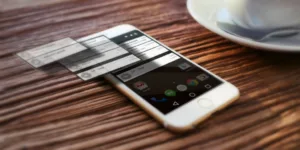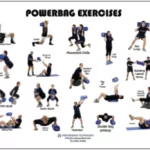There are many ways to communicate with your app users that are external to the app– SMS, push notifications, and emails are all familiar methods. But the best time to communicate with app users is when they’re in your app! That’s when they are a truly captive audience, highly motivated to use your product or services, make a purchase, or provide information you need.
In-app marketing is a new frontier for marketers, an opportunity for many to innovate and lead. If you’re thinking of taking on in-app messaging, here are some guiding principles to keep in mind:
Multidimensional Relevance
Marketing campaigns, in every format, worry about relevance. Traditionally, marketers have thought about time and place as the two determinates of relevance. But in apps there are many more factors that can help you make your message relevant, including user past activity, real-time actions in the app, and personal data.
Consider a user of an airline app; sure, proximity to her flight time and her presence at the airport are two important factors. You also might consider her loyalty program status, past seat upgrades, and current seat assignments. Targeting this user for a seat upgrade is much more likely to result in a purchase than simply targeting every single flyer who is near the gate before the flight. Multidimensionality means taking into account the whole matrix of information you have about a user and delivering the right message based on that.
App Users Expect More
So we covered relevance, what about delivery? App users are less forgiving when it comes to interruption on their mobile screens than they are elsewhere, and so it’s paramount that your in-app message isn’t disruptive. A message should feel like an integral part of your app. It should be easy for the user to close the message if they want to go back to browsing.
Make sure the message clearly directs the user to the desired action — are you trying to get them to a specific page? Make sure that they click the message it takes them there. Think of the traveler from the previous example; if she clicked the upgrade message, she should be taken straight to the page that allows her to pick her new seat and pay for it. Make the in-app message a helpful guide, not a nuisance.
Everything in Moderation
Persistence may serve you in other aspects in life, but when it comes to in-app messaging, you’re probably better off practicing moderation. Sometimes you create a relevant message and place it well, but still, the user doesn’t complete the action. Sometimes it’s not you, it’s them. Repeatedly displaying the message may drive them away from the app all together, so don’t push too hard.
Frequency is an important consideration when you’re planning your in-app strategy. You should set some general rules about how often messages are displayed within and across sessions, and also tweak based on users’ responsiveness to previous messages. Take our now-familiar traveler: if she chose not to upgrade when you first displayed the message, showing it again an hour later is unlikely to produce a different outcome. If she’s looking for an upgrade, she’ll know how to find it, but she’s probably just checking for flight status. Consider the long-term value of a loyal user, it’s not worth wasting for another promotional message that will frustrate the user.
It’s a Conversation
In-app messaging gives you more flexibility than many other marketing media. It can help you drive users to use a new feature or take advantage of a timely promotion. It’s a more reciprocal tool for communicating with your app users, and just as you would in conversation, it helps to listen, adjust, and react accordingly. Sometimes you can make a better offer to users based on past “conversations,” and other times you might hear a “no, thank you” and have to move on. Either way, in-app messages are a great way to increase users’ engagement in the app, and ultimately drive higher conversions.








